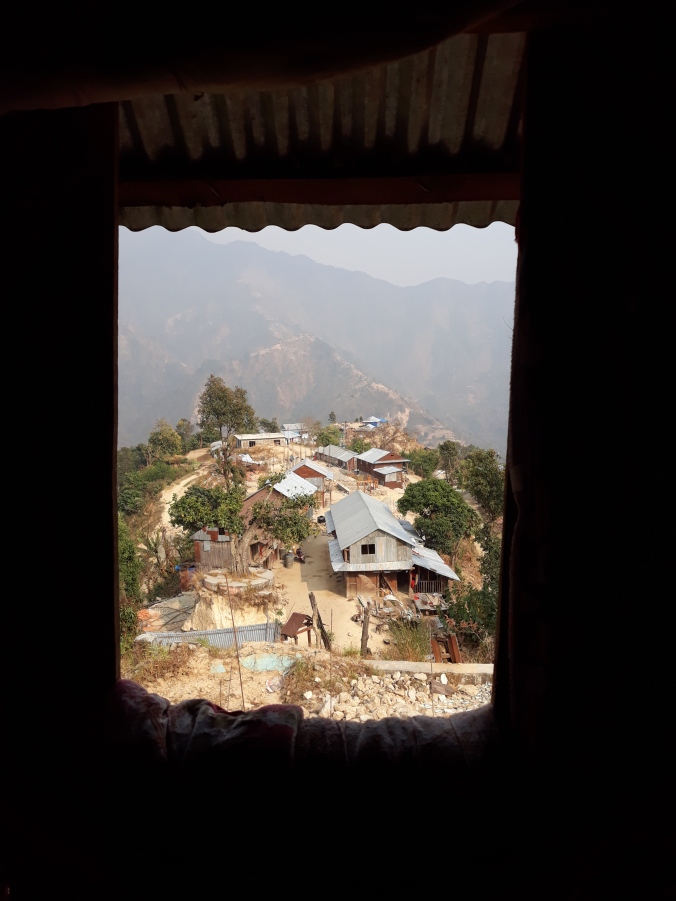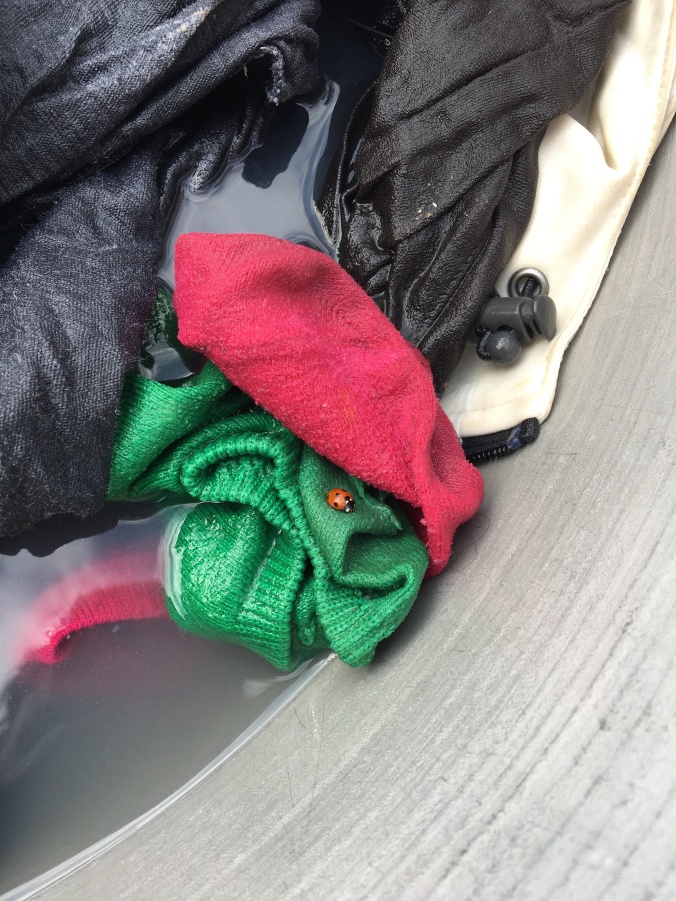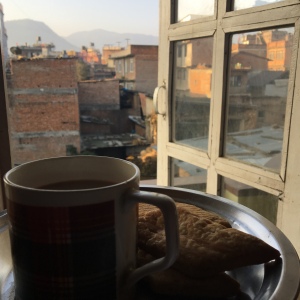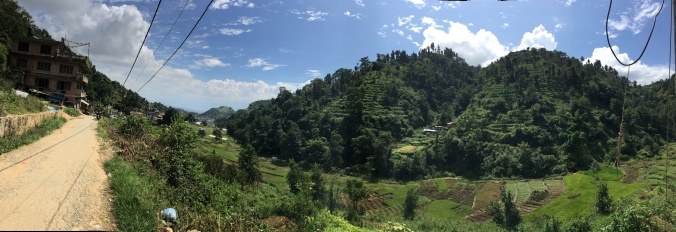Living in a new place is to have my mind continually broadened, focused, expanded, and nudged in many different directions with each new day. I’m never exactly the same person I was the day before, because I’ve always just gained another new vocab word, untangled another new sentence structure, adjusted to a new cultural habit, deepened my confidence in a new skill, or gotten to know a new friend better. Below I’ll share some of the things I’ve learned (or relearned in a new way!) specific to where I am in Nepal, but I hope they’ll also remind you of how much YOU, dear intelligent reader, have learned over the course of your life about the place(s) and culture(s) you have lived in. Whether you currently find yourself somewhere old or somewhere new, you are also constantly learning and growing, never exactly the same person you were before. Stop and think about it for a second–how far you’ve come and how much you know. Your mind is actually pretty amazing (and so are you).

Stunning sunset clouds above my neighborhood on the way home from work

Exploring Boudhanath Stupa with Sara, Susma, and MIka

Alumni and curren participants in MCC’s international volunteer programs
Now, here are six things I didn’t know two months ago, which I bet you don’t know either (unless you’ve lived in Nepal):
When to take my shoes off
Based on previous experiences with different Asian cultures, I wasn’t too surprised to see shoe racks outside most of the homes I have been to here.
What I wasn’t expecting was that we also take off our shoes before entering the church (same for if you were entering a Hindu temple).
The one that throws me off a bit is for the office. One morning I didn’t realize for an hour and a half that I had accidentally worn my shoes into the building instead of leaving them outside like normal (shh don’t tell anyone. . . . I promise it won’t happen again!)

Stairwell outside my house

Bulletin board outside church

MCC Nepal office building
The streets are very dusty here, so I bet we track way less grime inside this way.
How to catch a bus
Last week many offices were closed for the government holiday Constitution Day, so my two travelling buddies and I (you should definitely check out their travel blogs here and here) took advantage of some extra free time to visit a tomato farmer who invited us to her place a little ways outside the city. Armed with an email with the name of the town in both Nepali (जितपुरफेदि) and the Romanized version (Jitpurfhedi), we set out in a taxi to the post office that served as a landmark for the bus stop. When we got there, however, no one seemed to have heard of Jitpurfhedi. Some of the buses and microbuses had a yellow paper displayed in the front window listing their destinations, but none of them said जितपुरफेदि. The young bus conductors who manage the door and collect fares all shook their heads “no” when we asked. We kept walking along the curb as a seemingly endless stream of buses pulled up, loaded passengers, and drove off behind us, going many exciting places I’m sure but not Jitpurfhedi. Finally a helpful stranger on the sidewalk suggested that we walk around the block to a different bus stop (or maybe it’s the other side of the same very large strip of road that serves as a bus stop . . . either way we did it). Around the corner, past some shops and parks, over a pedestrian bride, and we started the process again: walking along the endless curb, squinting at every sign in the bus windshields, and lots of mystified bus workers shaking their heads. Then, after around half an hour total of searching for a bus we still hoped actually existed, wonder of wonders, we found someone else waiting on the sidewalk who was going the same place! We were able to board the bus with her after just a couple more minutes. Moral of the story: people are often kind and helpful when they can be, and we certainly wouldn’t have made it to the tomato farm without them.

Proof that we did, in fact, make it to the tomato farm! Here we are with the multi-talented and wonderfully hospitable Nantu Tamang.
(If you want to experience navigating Kathmandu city streets but are currently in a different part of the world, the next best thing is probably to read my fellow SALTer and friend Sara’s immersive blog post.)
When my birthday is
or any day for that matter. The Nepali calendar has twelve months, just like the Gregorian calendar (the one we use in the US and many other places), but the first month (Baisaakh) starts in the middle of April. This means that every Nepali month starts in the middle of a Gregorian month, and visa versa. For example, today, September 25, is actually Asoj 9 on the Nepali calendar. This year my birthday (November 17) falls on Mangshir 1, but since the lengths of the Nepali months vary it will probably be different next year–and by next year, I mean 2075, since the Nepali years start counting almost 57 years before the Gregorian system. So yes, Nepal is so far ahead of the rest of the world that it reached 2074 while everyone else was still in 2017. Either that or one of the planes I took to get here was actually a time machine.

Language class with our ever-patient teacher Rekha Rajbhandari

Gratuitous picture of the three of us in matching kurtas
How to make roti
So far, I’ve tried many new and delicious Nepali foods, but the one that is probably the most fun to make (or watch being made) is roti, Nepali flat bread. My host mom had already made the wheat flour dough and turned on the roti maker (like a small, round, flat panini press) when she demonstrated the steps for me:
- Roll a small ball of dough between your palms, flatten it, and sprinkle it with flour.
- Place in the center of the roti maker.
- Close the roti maker swiftly, smoothly, and firmly to squash the dough into a flat circle (easier said than done).
- Open the roti maker and watch until it is slightly brown and one side is done.
- Flip the roti! (Use a towel or quickly touch only the roti since the press is hot.)
- After half a minute comes the fun part. Close the roti maker (not pushing this time) and watch as the steam inside the roti expands and causes it to puff up like a balloon (it might slide right out of the roti maker if you let it).
- After another half minute the roti will be fully cooked, deflated, and ready to eat! Keep them warm in a covered container until you serve them (with spicy vegetable or meat sauce) because once cool they are no longer as pliable and soft.
(For an example of what eating aforementioned spicy vegetables should most of the time hopefully not be like, read through to point #2 in this wonderful blog post by my friend and fellow SALTer Mika, which also describes very well some of the frustrations and laughter that go along with language learning.)
My host mom made all this very effortless, making perfectly round, evenly cooked rotis, while at first mine were a bit lopsided because my dough balls tended to slip out of the roti maker instead of flattening. As I kept trying, however, and after several failed attempts that were rescued by my host mom, I started to get the hang of it, and even made several rotis unsupervised when she had to take a phone call. This small achievement actually inspired the title of this blog post when my host mom approvingly commented, “सिक्नुभयो!” (siknubhayo! you learned!), and I realized that’s bascially the theme of my life these weeks.
When to wear a saari
To celebrate . . . for example to a wedding! One of our coworkers invited us to her sister’s wedding, so my fellow SALTer Mika and I each borrowed a beautiful saari from my host family, who kindly helped us properly wrap, fold, and pin them. Here we are all dressed up with other members of the MCC Nepal team at the party!
How to pray in Nepali
Same as with my family in New York and with Christians anywhere else I’ve lived, at my home in Nepal we pray at meals before we eat together. Usually a member of my host family prays in Nepali, and a couple times I’ve prayed in English. When I had been here for a couple weeks, though, my host brother challenged me: “And now Nina will pray . . . in Nepali!” But I quickly shook my head and made excuses: “I don’t know how to yet, I don’t know the right grammar and words, maybe next week.” Next week, same challenge, same (more or less legitimate) excuses. “Tomorrow I will do it, I need to look up some more words and learn a few more structures, maybe if you write something down I could memorize it,” I would say. My perfectionism wanted “tomorrow” to remain conveniently in the future, because I knew a prayer in Nepali out of my mouth (or in any language, to be honest) would be simple and inelegant if not awkward. But at the same time, since thoughts and prayers are so intertwined for me, and I have to start thinking in a language if I am to speak it well, I was eager to be able to pray in Nepali. Finally, after five weeks of being here and making sure I could pronounce आशिष् (aashis), blessing, I was able to put together a few short sentences to pray with my family before dinner. It was definitely simple and probably inelegant, but awkward? No. God hears prayers in every language from His children all over the world (no matter what mistakes non-native speakers make). For me, deeper fellowship with people who are not only friends but also spiritual family is a sweet reward to anticipate as I learn to speak and pray in a new language.

Eating homemade panipuri with my host family

Daily staff lunch at the MCC Nepal office
Bonus if you want to learn even more . . . five of my Nepali vocab words!
- दाल (dhaal): lentils
- भात (bhaat): rice (put those two together and you get dhaal bhaat, the delicious staple Nepali meal)
- शहर (sahar): city
- गाउँ (gaau): village
- प्रार्थना (praarthnaa): prayer















































